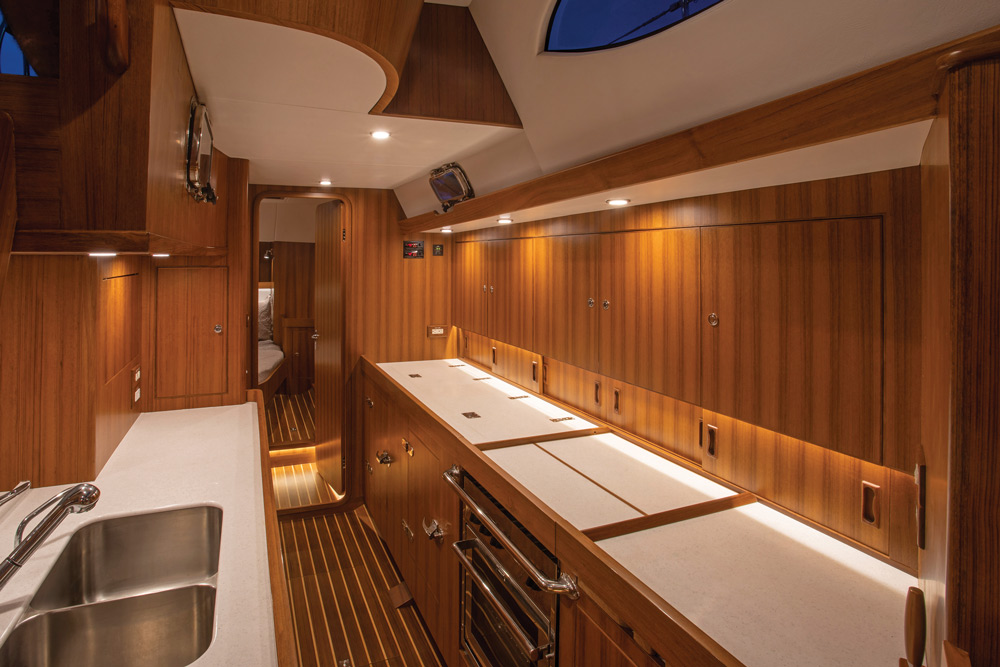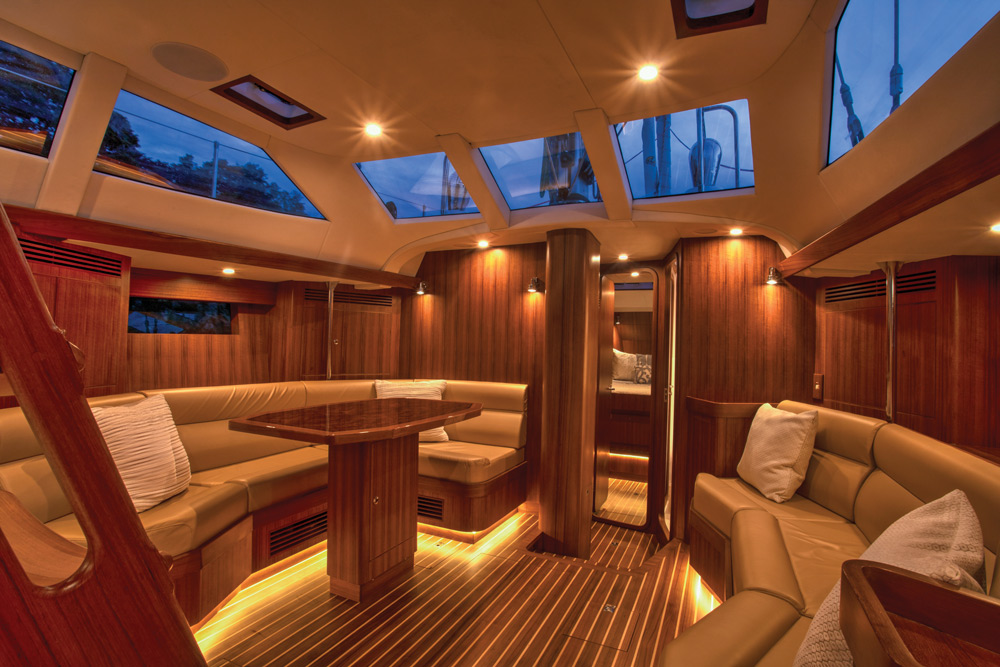Made for the sea
The Hylas 48 is a robust offshore passagemaker tricked out with creature comforts, sophisticated systems and a seakindly nature
Down below
Heading below, I was struck by how light and bright it was in the semi-raised saloon. The boat was finished in light teak, with a solid teak-and-holly sole. Even the mast was finished in teak. Being semi custom, the choices for interior layout and finishes are nearly endless. There are at least a dozen different layouts for the saloon alone. The test boat had a large settee wrapping around the dining table. The opposing settee was too far for dining seating, but a movable bench seat can be used for seating or, with the cushion removed, used as a cocktail table. The forward-facing nav desk is to starboard behind the settee and is large enough to spread out charts.

The in-line galley is located down on the port side. The Force 10 three-burner stove and oven and large refrigerator and freezer are outboard, with the large double sink inboard underneath the companionway steps. With plenty of places to brace, this galley would be comfortable to work in when sailing in a seaway.
Forward is a cabin with twin bunk beds to port, and this space can be designed as an office or workroom. There’s a head to starboard and a guest cabin in the forepeak. The owner’s cabin is aft, with a large centerline berth, settee and head with a separate shower. At every turn there seems to be a hanging locker or storage cubby.
All systems are designed with offshore passagemaking in mind. The fuel management system has been cleverly engineered to move the 290 gallons of fuel between the different tanks through a fuel filter, eliminating the need to bleed the system.
“The fuel polishing systems was originally a client idea that we made standard because fuel sits for long time in the different tanks and you want to get the water out,” Pschorr said. “And if you are on a long passage you can move the fuel to the windward side.”
Hylas has gone to great lengths to make the mechanical and electrical systems easy to manage. Everything is labeled at the factory with easy-to-read tags, although some things get a little lost in translation and cold water is sometimes labeled as clod water. The electrical panel is large and easy to read. For power there are three AGM house batteries, and a dedicated battery for starting and one for the windlass with two 80-amp alternators to keep them topped off.


Comments